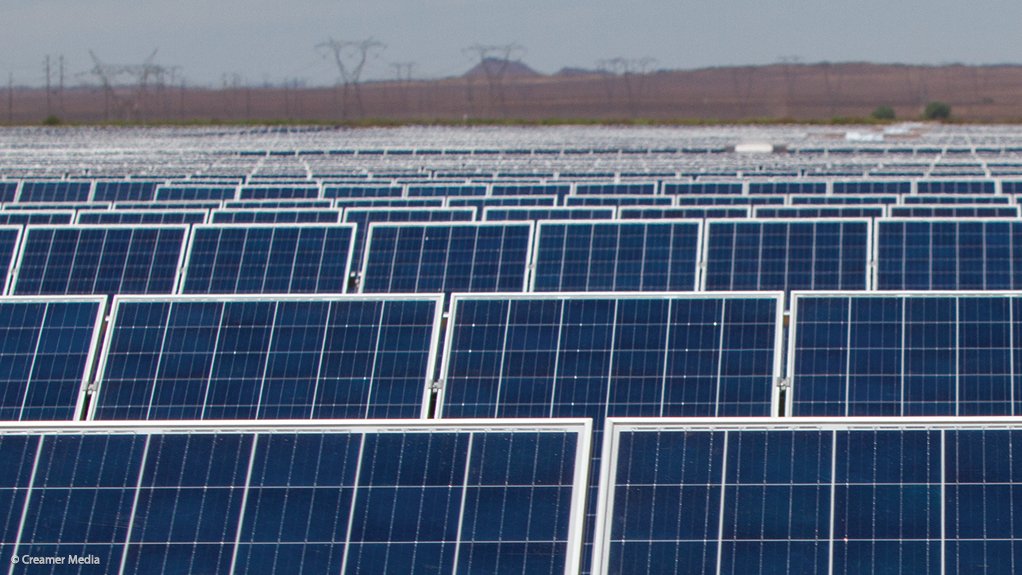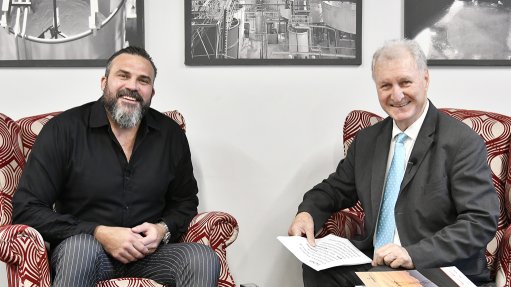New global costs report confirms new renewables are undercutting existing coal
The cost of electricity from new solar and wind plants is increasingly undercutting the operating costs alone of existing coal‑fired power plants and strengthening the case for their early retirement, a newly released International Renewable Energy Agency (Irena) report confirms.
Published on June 22, the ‘Renewable Power Generation Costs 2020’ report states that over 800 GW of existing coal capacity already costs more than new solar photovoltaic (PV) or onshore wind projects commissioned in 2021.
It adds that retiring these plants would reduce power generation costs by up to $32.3-billion yearly and avoid around three-gigatonnes of yearly carbon dioxide emissions.
An analysis of coal plants in Germany and Bulgaria shows that all these plants already have higher operating costs today than new solar PV and onshore wind, while 149 GW of coal capacity in the US and 141 GW in India, representing 61% and 65% of the capacity analysed, has higher operating costs than new renewable capacity.
The Irena report argues that the value propositions of coal plants providing firm and flexible power generation are also being eroded by the sharp decline in the cost of utility-scale battery storage.
Between 2015 and 2018, the cost of utility-scale battery storage in the US fell by 71% from $2 152/kWh to $635/kWh.
“With new renewables, energy efficiency and, in some regions, natural gas all reducing existing coal‑fired power plants’ capacity factors, these higher costs look set to be the norm,” the reports asserts.
More than 60%, or 162 GW, of the new renewable-energy capacity installed last year had costs that were below those of the cheapest source of new fossil fuel‑fired capacity.
“In emerging economies, where electricity demand is growing and new capacity is needed, these renewable power generation projects will reduce costs in the electricity sector by at least $6-billion per year, relative to the cost of adding the same amount of fossil fuel‑fired generation.”
This growing cost competitiveness of renewables is reflected in global deployments, with a cumulative total of 644 GW of renewable power generation having been added since 2010 and with renewables emerging as the new “backbone” of the electricity sector.
The cost of renewables, meanwhile, continued to fall even in 2020, despite Covid-linked disruption. The cost of electricity from utility-scale solar PV declined by 7% year-on-year, while offshore wind fell by 9%, onshore wind 13% and concentrating solar power by 16%.
DRAMATIC DECADE
The picture for the period 2010 to 2020 is more dramatic, led by utility-scale solar PV, the global weighted‑average levelised cost of electricity of which fell by 85%, from $0.381/kWh to $0.057/kWh, as total installed costs fell from $4 731/kW to $883/kW. Global cumulative installed capacity of all solar PV, utility and rooftop, increased from 42 GW in 2010 to 714 GW in 2020.
For onshore wind projects, the global weighted‑average cost of electricity between 2010 and 2020 fell by 56%, from $0.089/kWh to $0.039/kWh, as average capacity factors rose from 27% to 36% and total installed costs declined from $1 971/kW to $1 355/kW. Cumulative installed capacity grew from 178 GW to 699 GW during this period.
Irena notes in the report that, over the past 18 months, there were also an increasing number of solar PV projects announced in Qatar, the United Arab Emirates and Saudi Arabia with extremely low electricity costs of below $0.03/kWh.
“These very low solar PV price levels imply that low-cost renewable hydrogen may already be in reach.
“The potential levelised cost of hydrogen, assuming the low solar PV and onshore wind prices from the recent auctions in Saudi Arabia, could be as little as USD 1.62/kg of hydrogen (H2).
“This compares favourably with the hypothetical cost of natural gas steam methane reforming, with today’s carbon capture, utilisation and storage costs at between $1.45/kg H2 and USD 2.4/kg H2.”
Article Enquiry
Email Article
Save Article
Feedback
To advertise email advertising@creamermedia.co.za or click here
Comments
Press Office
Announcements
What's On
Subscribe to improve your user experience...
Option 1 (equivalent of R125 a month):
Receive a weekly copy of Creamer Media's Engineering News & Mining Weekly magazine
(print copy for those in South Africa and e-magazine for those outside of South Africa)
Receive daily email newsletters
Access to full search results
Access archive of magazine back copies
Access to Projects in Progress
Access to ONE Research Report of your choice in PDF format
Option 2 (equivalent of R375 a month):
All benefits from Option 1
PLUS
Access to Creamer Media's Research Channel Africa for ALL Research Reports, in PDF format, on various industrial and mining sectors
including Electricity; Water; Energy Transition; Hydrogen; Roads, Rail and Ports; Coal; Gold; Platinum; Battery Metals; etc.
Already a subscriber?
Forgotten your password?
Receive weekly copy of Creamer Media's Engineering News & Mining Weekly magazine (print copy for those in South Africa and e-magazine for those outside of South Africa)
➕
Recieve daily email newsletters
➕
Access to full search results
➕
Access archive of magazine back copies
➕
Access to Projects in Progress
➕
Access to ONE Research Report of your choice in PDF format
RESEARCH CHANNEL AFRICA
R4500 (equivalent of R375 a month)
SUBSCRIBEAll benefits from Option 1
➕
Access to Creamer Media's Research Channel Africa for ALL Research Reports on various industrial and mining sectors, in PDF format, including on:
Electricity
➕
Water
➕
Energy Transition
➕
Hydrogen
➕
Roads, Rail and Ports
➕
Coal
➕
Gold
➕
Platinum
➕
Battery Metals
➕
etc.
Receive all benefits from Option 1 or Option 2 delivered to numerous people at your company
➕
Multiple User names and Passwords for simultaneous log-ins
➕
Intranet integration access to all in your organisation





















